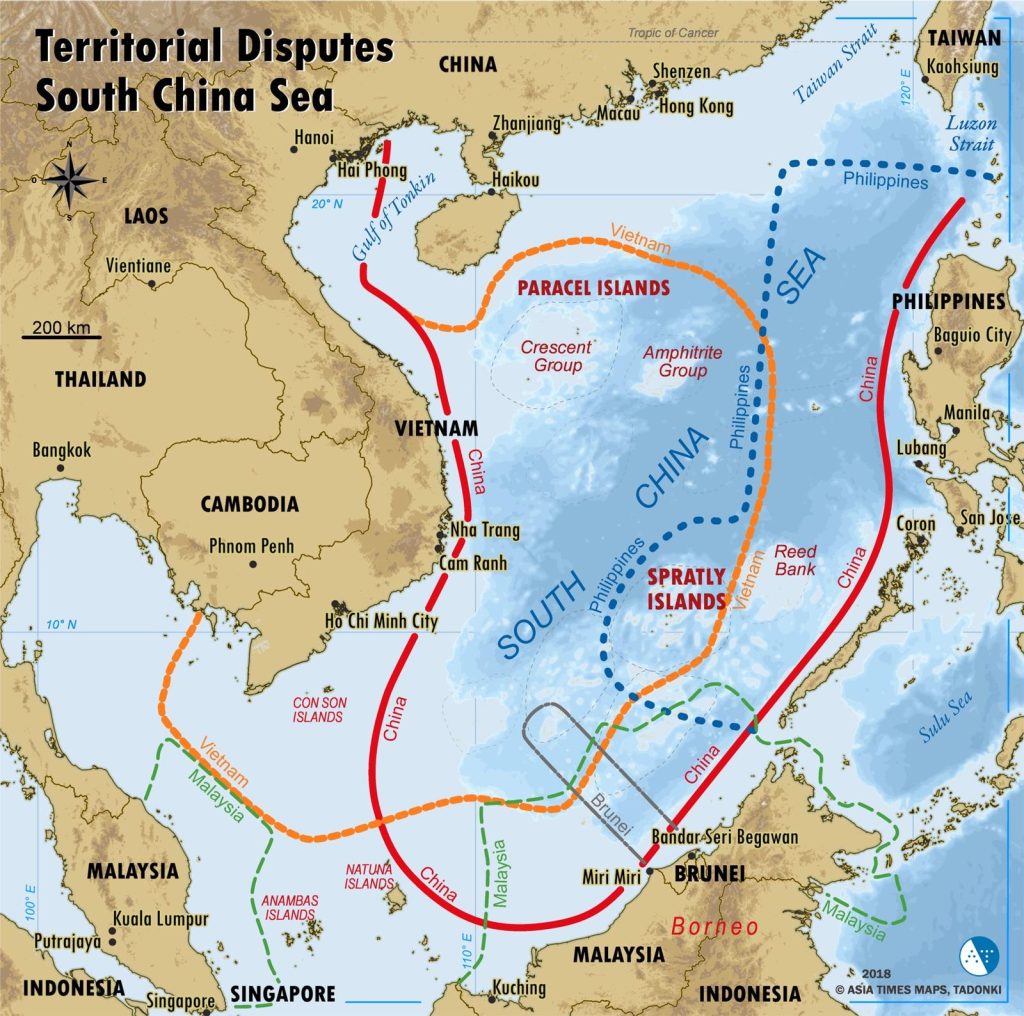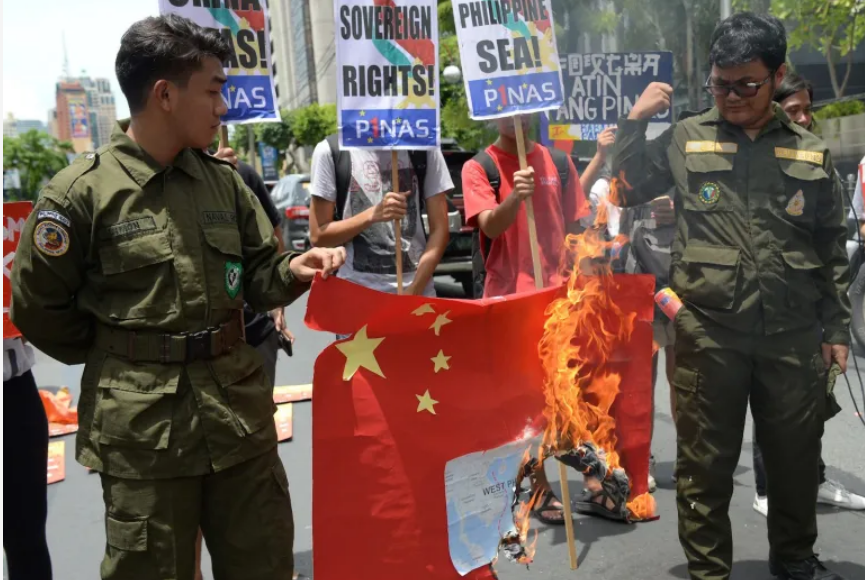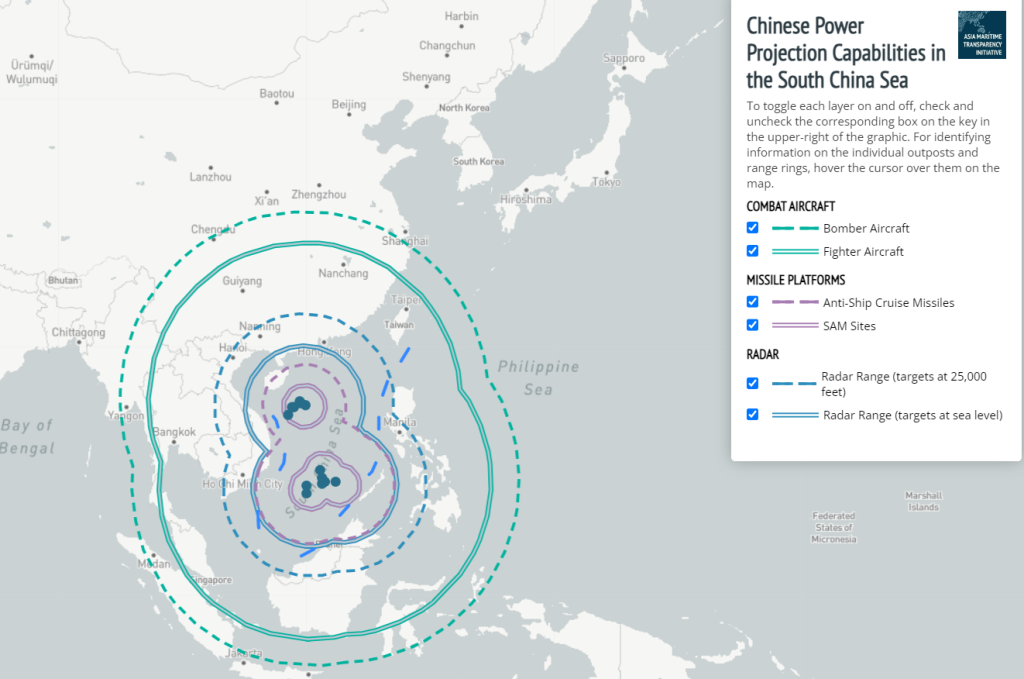Deepening relations between the U.S., Philippines, and Japan show increased engagement by the U.S. to directly counteract China’s expanding influence in the South China Sea. China ideologically is very unlikely to back down from its territorial claims, and will likely continue to engage in non-violent aggressive actions in the South China Sea. The ever-encroaching footprint between the two superpowers in the region sets the stage for a conflict that would shake the globe to its core.
What happened:
The U.S., the Philippines, and Japan recently held a trilateral summit in Washington D.C. The summit’s goal was to increase the cooperation between the three nations in civil, military, and economic matters, according to an announcement from the White House.
This comes as China has increased its aggressive actions against the Philippines 14-fold in the last two years, according to the Center for Strategic and International Studies (CSIS).
These aggressive actions by the Chinese often utilize things like water cannons, high-power lasers, and ramming attacks to dissuade foreign nations vessels from operating in their claimed territory.
Although many nations compete for territory in the South China Sea, China is the most aggressive and it is the largest unofficial land/feature “controller”.

Why It Matters:
Growing tensions between China and the U.S., and its allies, have made the Indo-Pacific a powder keg for a possible ensuing conflict. China, which fears the encroachment of the U.S. and its allies into its territory both physically and culturally, has rapidly developed its armed forces footprint outside of China.
Increasing Chinese connections in Africa, the Middle East, and Central Asia through its Belt and Road Initiative has expanded China’s own ability to further its foreign policy. China has found great success in securing partnerships with many nations around the globe, in its effort to provide an alternative to the current U.S.-centered world order.
Outside of the South China Sea, China’s efforts have been successful. However, the aggressive actions taken by the Chinese in their attempts to legitimize their “claims” in the region, have hurt their ability to court possible allies.
A great example of this is the Philippines. The prior Filipino administration was very friendly to China. Then-President Duterte had engaged the Chinese to invest in the Philippines, mainly through infrastructure projects. However, many of those infrastructure projects becoming “delayed or shelved” while “anti-Chinese rhetoric [had] grown louder within Duterte’s own government and among the Philippine public” according to a CNBC report. This was due to the unfulfilled promises of the Chinese government and their increasingly aggressive actions in the South China Sea.
The modern current Filipino administration has increasingly deepened its ties with the United States and increased security activities to counteract Chinese activity, with a “significant majority” of Filipinos supporting it, according to Radio Free Asia.
According to the East Asia Forum, China utilizes the “Three Warfares’ Strategy”, a combination of public opinion, psychological and legal warfare, as well as economic rewards to keep “Southeast Asian countries divided on the [South China Sea] dispute”.
Phillipine President Marcos recently announced that he “has no plan to give the United States access to more Philippine military bases” and that the current American presence “was sparked by China’s aggressive actions in the disputed South China Sea”.

Behind the numbers
The Asia Maritime Transparency Initiative, a sub-group of the CSIS, reported that China controls 20 outposts in the Paracel Islands and 7 in the Spratly Islands. China has also created 3,200 acres of new land through dredging and artificial island creation.
Trade in the South China Sea accounts for more than 21% of all global trade, estimated to be worth around $3.37 trillion dollars, according to CNBC.
Approximately 3.6 billion barrels of petroleum and 40.3 trillion cubic feet of natural gas have been discovered in the South China Sea, as reported by the United States Energy Information Administration.
China has also raised its defense budget by 7.2%, maintaining China’s position as having the world’s 2nd largest defense budget, according to the Associated Press. China’s defense budget has doubled since 2015.
8 out of 10 Filipinos want the Philippines to work with the US amid tensions in the South China Sea, according to GMA News Online, a Philippine News Service.
The US conducted 107 large-scale drills and 98 multilateral exercises in 2023, according to the Global Times, a Chinese news service.
According to the U.S. Army War College, “If the conventional military balance continues to swing in China’s favor, US deterrence will likely weaken, and escalation dynamics may become more unpredictable in armed conflict”.
Here is an image of China’s affirmed control and military footprint in the South China Sea.

Moving forward:
As China’s aggressive actions continue to promote increased cooperation between the afflicted nations and the U.S., the region is likely to stabilize as conflict becomes more likely. Conflict does not benefit the U.S. nor China. China likely will continue low-level non-violent aggressive actions in the region, in order to maintain the current status quo. However, it will likely not try to increase the threat it presents, for fear of creating a situation where the U.S. becomes even more involved.
The U.S. involvement as it stands currently, presents a low possibility of escalation into conflict. However, there are many, many, fingers on triggers, in and around the South China Sea. One accidental missile, gunshot, or rocket launch could lead to a devastating war and both parties would likely be vastly weakened. This is a end state that China nor the U.S. seeks.


